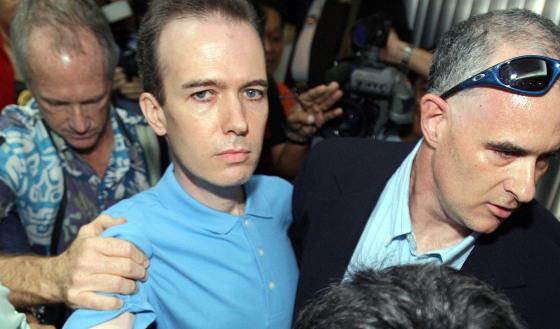Table of Contents
- Stun Gun Allegations and Their Impact on the Investigation
- Media Coverage and Public Perception of Stun Gun Theories
- Expert Analysis on the Feasibility of Stun Gun Usage in the Case
- Recommendations for Responsible Reporting on Unverified Crime Theories
- To Conclude
Stun Gun Allegations and Their Impact on the Investigation
The incorporation of stun gun allegations into the JonBenet Ramsey investigation introduced a complex layer of speculation that significantly influenced public perception and investigative directions. Various reports suggested that a stun gun might have been used as a method to incapacitate JonBenet, a theory that quickly gained traction in media outlets and among armchair detectives alike. This theory stemmed from purported evidence of unidentified electrical burns found on the victim’s body, although law enforcement maintained a cautious stance due to the lack of conclusive forensic support. The controversy surrounding these claims often diverted attention from other critical evidence and led to polarized opinions within the investigation team.
Key impacts on the investigation included:
- Resource Diversion: Law enforcement allocated additional resources to examine mysterious electrical marks, which critics argue could have been spent analyzing more established leads.
- Public Misinformation: Media reports fueled widespread assumptions around the stun gun angle, contributing to a charged atmosphere of speculation that clouded objective analysis.
- Theoretical Fragmentation: The theory opened the case to an array of less substantiated hypotheses, complicating the search for a coherent narrative that could withstand legal scrutiny.
Media Coverage and Public Perception of Stun Gun Theories
From the outset, media outlets played a pivotal role in shaping how the stun gun theories were perceived by the public. Sensational headlines and frequent mentions in broadcast segments amplified the intrigue around this controversial angle, often highlighting speculative details without substantial evidence. The relentless coverage created an aura of plausibility that gave the stun gun theory a foothold in popular discourse, despite law enforcement’s cautious stance. This phenomenon was further fueled by expert interviews and dramatic recreations, which sometimes blurred the line between factual reporting and entertainment.
Public perception of these theories has been notably polarized, influenced heavily by the nature of media presentation. Social media platforms and online forums became breeding grounds for debate, fueled by conflicting narratives and emotionally charged commentary. Key elements contributing to this divide include:
- Selective reporting: Focus on cases and details supporting stun gun involvement, often sidelining contradictory evidence.
- Viral misinformation: Rapid spread of unverified claims sensationalized by user-generated content.
- Expert analysis: Commentary from forensic specialists lending credibility or skepticism, affecting public trust.
Ultimately, the media’s framing of stun gun theories not only influenced public opinion but also complicated the pursuit of objective truth, highlighting the delicate balance between investigative journalism and responsible reporting in high-profile criminal cases.
Expert Analysis on the Feasibility of Stun Gun Usage in the Case
Recent expert evaluations highlight critical challenges in assessing the plausibility of stun gun application within the context of the JonBenet Ramsey investigation. Forensic specialists emphasize that the absence of characteristic electrical burns or distinctive nerve damage commonly linked to stun gun use undermines the theory that such a device was involved at the crime scene. Furthermore, forensic pathologists note that stun guns leave behind a unique residue or trace elements, which exhaustive crime scene and autopsy reports failed to identify. This absence significantly detracts from stun gun hypotheses, suggesting alternate means of incapacitation or trauma.
Criminologists also examine logistical and behavioral factors when debating stun gun feasibility. Key points include:
- Accessibility: Stun guns were neither widely available nor commonly used in the mid-1990s when the incident occurred.
- Operational Noise: Experts underline that the audible crackle and visible sparks emitted during stun gun activation would likely capture attention in a residential environment.
- Physical Restraints: The lack of defensive wounds consistent with electrical incapacitation stands in contrast to the trauma patterns recorded.
- Witness Testimonies: No reports from household members or neighbors mention sounds akin to stun gun discharges or related disturbances.
Recommendations for Responsible Reporting on Unverified Crime Theories
In covering sensitive investigations like the JonBenet Ramsey case, media outlets bear a crucial responsibility to prioritize accuracy and clarity. It is imperative that reports distinguish clearly between established facts and speculative theories, especially those involving contentious elements such as stun guns. Journalists should avoid sensationalizing unverified claims, instead contextualizing them within the broader evidentiary framework. This approach helps prevent the spread of misinformation and protects the integrity of ongoing legal processes.
Additionally, media entities must ensure sources are credible and corroborated before publishing any new allegations. Incorporating expert opinions and referencing official statements can significantly enhance the reliability of the coverage. To maintain public trust, editors and reporters should also consider the ethical implications of their work by:
- Using precise language that avoids conjecture as fact,
- Providing updates only when new information is confirmed,
- Respecting the privacy and dignity of individuals connected to the case, and
- Encouraging open dialogue based on verified information.
To Conclude
In conclusion, the discussion surrounding stun guns in the JonBenet Ramsey case underscores the complex interplay between media narratives and investigative theories. While stun guns remain a peripheral aspect within the broader scope of the case, their mention reflects the ongoing search for answers in one of America’s most perplexing unsolved crimes. As new information and analyses emerge, it is crucial for media coverage to prioritize factual reporting over speculation, ensuring that public understanding is guided by evidence rather than conjecture. The JonBenet Ramsey case continues to captivate, reminding us of the persistent challenges in criminal investigations and the vital role of responsible journalism.Check Our Other Blogs
- StunGun – Your Trusted Source for Stun Guns, Laws, and Self-Defense Tips
- PepperSprayLaws – Your Trusted Resource for Pepper Spray Information
- StunGunLaws – Your Trusted Guide to Stun Gun Legality and Safety





